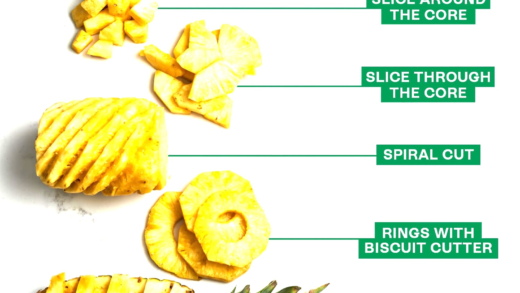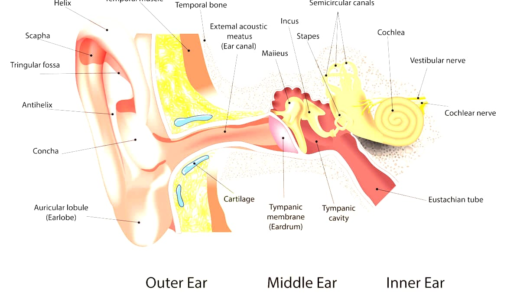Spider exoskeletons are crucial for protection and growth. Molting is essential for spiders to grow, heal, and adapt. The process involves stages from preparation to shedding the old exoskeleton. After molting, spiders can recycle their old shells, which benefits the ecosystem. The frequency of molting varies, influenced by age and environmental factors. Understanding these aspects reveals the intricate lives of spiders and their adaptations.
What is a Spider Exoskeleton: Understanding Its Functionality
Spider exoskeleton serves as a protective outer layer for spiders, similar to armor for knights. Made primarily of chitin, a tough yet flexible material, the exoskeleton plays a crucial role in maintaining the spider’s structure and protecting its internal organs. This hard shell not only offers physical protection against predators and environmental hazards but also helps in moisture retention, which is vital for survival.
Functionally, the exoskeleton is essential for movement. Spiders rely on hydraulic pressure to extend their legs since they lack muscles like those found in vertebrates. When a spider contracts its muscles, it creates pressure within its body, pushing its legs outward. This unique system allows spiders to walk, jump, and even pounce on prey with impressive agility.
Why Do Spiders Need to Molt?: The Importance of Shedding Their Exoskeleton
Molting is a critical process for spiders, allowing them to grow and adapt. As spiders grow, their spider exoskeleton becomes too tight, similar to trying to fit into a pair of shoes that have become too small. To accommodate their increasing size, spiders must shed their old exoskeleton. This process, known as ecdysis, is essential for their development.
Additionally, molting enables spiders to repair any damage to their exoskeleton. A spider may have sustained cracks or wear, and molting provides a chance to regenerate a strong, new shell. This regeneration is not just about size but also about improving resilience against environmental threats.
Stages of the Molting Process in Spiders: A Step-by-Step Breakdown
The molting process involves several stages, each crucial for the spider’s successful transition to a new exoskeleton. Here’s a breakdown of these stages:
- Pre-Molt Phase: In this initial stage, the spider prepares for molting by absorbing water, which causes its body to swell. During this time, it may become less active and seek a safe, secure location.
- Molt Initiation: The spider begins to separate its old exoskeleton from its body. This is often marked by a change in color and behavior. The spider may hang upside down or find a secluded spot.
- Shedding the Old Exoskeleton: The spider pushes out of its old shell, often leaving it behind intact. This can take several minutes to hours, depending on the species.
- Hardening: After shedding, the new exoskeleton is soft and vulnerable. The spider must pump fluid into its legs and body to expand and harden the new shell.
- Post-Molt Recovery: Finally, the spider recovers, regaining its strength and adjusting to its new size. This stage can take days as the new exoskeleton solidifies fully.
Understanding these stages gives insight into the complexities of spider growth and survival.
How Molting Affects Spider Growth: Size Matters!
Molting is vital for spider growth. As spiders mature, their spider exoskeleton becomes restrictive. This leads to the necessity of shedding the old exoskeleton to allow for an increase in size. When a spider molts, it can grow significantly larger than before. In fact, after each molt, many spiders can increase their size by up to 20% or more. The growth spurts that follow molting are essential for their development.
Moreover, molting also enables spiders to expand their bodies and legs, which is crucial for their hunting efficiency. A larger spider can capture bigger prey and compete more effectively for resources. This growth process, however, is not without risks. An improperly executed molt can result in incomplete shedding, leaving parts of the old exoskeleton attached, which can hinder movement and growth.
In conclusion, molting is not just about getting rid of the old shell; it’s a critical step in ensuring that spiders can grow and thrive in their environment. Without this process, spiders would remain stunted and vulnerable.
Materials That Make Up a Spider’s Exoskeleton: What’s Inside?
The spider exoskeleton is primarily composed of chitin, a biopolymer that is both strong and flexible. Chitin provides the necessary durability while allowing for movement. This material is similar to what makes up the shells of crustaceans and the cell walls of fungi, showcasing the diverse applications of chitin in nature.
In addition to chitin, the exoskeleton contains proteins and other substances that contribute to its strength and flexibility. These components are strategically layered, providing a robust yet lightweight structure that supports the spider’s activities. Some spiders even incorporate minerals, such as calcium, which enhance the hardness of their exoskeleton.
Understanding these materials offers insight into how spiders have adapted to their environments. The resilience of their exoskeleton allows them to survive in various habitats, from the damp forest floor to arid deserts.
Risks and Challenges of Molting: What Can Go Wrong?
Despite its necessity, molting carries significant risks for spiders. One of the most critical challenges is the vulnerability during the molting process. After shedding, the new spider exoskeleton is soft and susceptible to injury. During this time, spiders are particularly defenseless against predators.
Additionally, if a spider fails to shed its old exoskeleton completely, it can lead to serious issues. Residual old skin can restrict movement and growth, often resulting in deformities or even death. Environmental factors, such as humidity and temperature, also play a crucial role in successful molting. Too low humidity can cause the new exoskeleton to harden prematurely, while too high can lead to complications in the process.
Overall, while molting is essential for growth and regeneration, it is fraught with dangers that can significantly impact a spider’s survival. Awareness of these risks highlights the incredible resilience spiders must exhibit to thrive.
Preparing for Molting: How Spiders Get Ready
Spider exoskeleton preparation for molting is a fascinating process. Before molting begins, spiders undergo a pre-molt phase where they absorb water to swell their bodies. This can lead to a noticeable change in behavior, as spiders may become less active and seek out a safe, secure location to undergo the process. They often choose places that provide shelter from predators, such as crevices or the undersides of leaves.
During this phase, the spider’s body starts producing enzymes that will help break down the old exoskeleton. This preparation is crucial, as it sets the stage for the successful shedding of the old shell. Spiders may also stop eating during this time to conserve energy for the strenuous process ahead.
What Happens to the Old Exoskeleton?: Recycling in Nature
After a spider molts, the old exoskeleton is often left behind, resembling a ghostly shell of its former self. This exoskeleton doesn’t go to waste; it plays a role in the ecosystem. Decomposers, such as fungi and bacteria, break down the old shell, recycling its nutrients back into the soil. This process supports plant growth and contributes to the overall health of the habitat.
Interestingly, some spiders may consume their old exoskeleton. This behavior, known as autophagy, allows them to reclaim valuable nutrients. It’s a remarkable example of how spiders adapt and utilize every resource available to them, ensuring their survival in their environment.
Molting Frequency: How Often Do Spiders Shed Their Skin?
Molting frequency varies widely among spider species and is influenced by factors such as age, environmental conditions, and availability of food. Young spiders tend to molt more frequently, often every few weeks to accommodate rapid growth. Adult spiders, however, may only molt once or twice a year. This reduced frequency is due to the slower growth rate as they reach maturity.
Environmental conditions play a significant role in determining molting frequency. For example, spiders in warmer climates may experience more frequent molts compared to those in cooler areas. Additionally, food availability can impact how often spiders shed their exoskeletons; an abundance of prey may encourage more frequent molting.
Interesting Facts About Spider Molting: Surprising Insights
Spider molting is full of surprises and intriguing facts. Here are some interesting insights:
- Some spiders can grow up to 20% larger after each molt, significantly enhancing their hunting capabilities.
- During molting, spiders are particularly vulnerable to predators, which is why they often choose secluded spots.
- Molting can take anywhere from a few minutes to several hours, depending on the species and environmental conditions.
- Spiders can regenerate lost limbs during the molting process, allowing them to recover from injuries.
- Not all spiders will successfully molt; environmental stressors can lead to incomplete molting, which can be fatal.
These facts highlight the complexities and marvels of spider biology, showcasing the incredible adaptations that allow them to thrive in various environments.





Comments are closed.